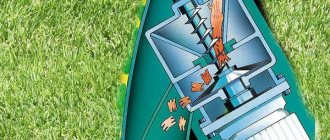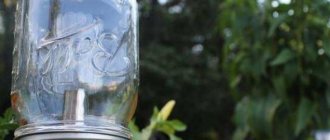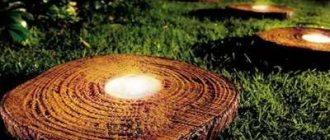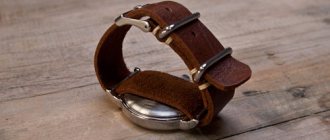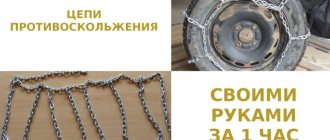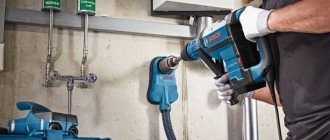General manufacturing guidelines
It is impossible to assemble a knot crusher with your own hands without certain skills in working with a welding machine, as well as without the appropriate tools. To make a homemade shaft, you will need to contact a metalworking or turning workshop (if you can’t find an old ready-made unit). The manufacturing process includes the following steps:
- Selecting the correct design for the future branch chopper.
- Selecting an engine (gasoline, diesel or electric) and calculating transmission.
- Procurement of all necessary materials and parts that will need to be turned on the machine.
- Assembling the main frame.
- Installation of the drive, cutting elements and main rotation gear.
- Installation of protection and bunkers.
Belt drive is the simplest and safest option. If any emergency occurs, the belt will simply slip off or break without bad consequences. The same cannot be said about a rigid coupling. To design a homemade shredder, it is better to choose simple options:
- Chopper with circular saws. Excellent for processing small wood.
- A crusher operating like a jointer. It is intended for branches of small diameter. The output is a medium-sized fraction.
- Disc chopper. Treats branches with a diameter of less than 5 cm.
Main components of the chopper
The self-made branch crusher is based on the design and has the following components:
- Electric motor to provide torque.
- One or two working shafts.
- Directly the working knives themselves.
- The frame serves as the base.
- A special bunker is installed to load branches.
- The casing provides protection from possible injuries.
For convenience, the wood chipper is equipped with a pair or four wheels. During operation, the engine, through a system of chains or belts, transmits rotation to the shafts with working knives installed on them. Branches, leaves, and rotten wood are loaded into the receiving box, and the working mechanisms grind the waste into chips, which can later be loaded into a humus pit. The operation of the structure resembles the operation of a household meat grinder.
Industrial size shredders are designed for processing thick branches. In the conditions of a personal plot, this does not make sense, so it is worth making a country veterinarian with your own hands.
Disc crusher for roundwood chips
Disc crushers have proven themselves well when crushing stationary round timber of large diameters and when crushing small lump waste and branches mobile. When crushing stationary round timber of large diameters, this type of equipment competes with drum crushers and has the following advantages over them:
- A disk chip crusher occupies a much smaller area than a similar drum crusher. But at the same time the height of the crusher is greater. This advantage is advantageous to use in workshops with a small area.
- The quality of wood chips is higher than that obtained from drum crushers. This makes it possible to obtain higher quality chips from such chips in the future.
- Disc crushers do not have a separate mechanism for feeding raw materials to the cutting part, since specially positioned knives and feeding raw materials at an angle allow the wood to be pulled in without additional devices. We would also consider this criterion a plus, since there is no need to maintain an additional unit.
Specially made blades allow you to throw wood chips at a distance of 3 - 10 meters.
The advantage of small disc crushers is their low price and long service life. For example, here you can buy a disc crusher quite inexpensively.
The nuances of operating homemade equipment
Any homemade product is not always equipped with all the devices according to safety requirements. During operation, in order to avoid accidents, the following rules must be observed:
- When starting work, you should use tight-fitting gloves, glasses and a hat; It is strictly forbidden to push branches and debris with your hands; for this you can use the next batch of tops.
- The diameter of the material to be crushed must not exceed that allowed by the engine power; Do not allow hard materials to enter the cutting blade hopper; they can damage the blades and damage the engine.
- If branches get stuck in the drum, the unit is completely de-energized, and only then are the stuck pieces removed.
- The power wires are laid in places where branches will not lie and wood chips will not fall.
Correct and long-term use of a hand-made branch chopper is possible not only if operating conditions are observed, but also with proper storage. After chopping, the knives are cleaned, and the device itself is put away in a shed or under a shed, and the knives are sharpened if necessary. Almost anyone can build a branch crusher with their own hands, the main thing is to have an engine and the necessary metal blanks.
Types of engines
A homemade branch chopper has one basic design. The difference may be in the power of the electric motor. For more powerful devices, a gasoline engine is used; it can be used to chop trees with trunks with a diameter of more than 100 mm. Gasoline cars are distinguished by their mobility due to their independence and independence from power sources.
Electric drives for garden wood chippers are divided into three main types based on power:
- To process waste in small areas, an engine with an operating power of up to 1.5 kW is used; it is capable of grinding branches with a diameter of up to 2 cm.
- When chopping branches up to 4 cm, a drive with a power of up to 4 kW is used on a personal plot.
- A value of 6 kW or more is used when working on wood waste collection in large areas.
Torque is transmitted using a chain or belt drive, or by installing shredder blades on the engine shaft itself.
Types of garden shredders
There are different names for chippers used for crushing wood waste. Wood chipper, branch chopper, shredder, wood chipper - this is not a complete list of names. Despite such a variety of terms, the structure of various units is almost the same. Any crusher consists of the following elements:
- steel frame into which all parts and mechanisms are attached;
- main drive – electric motor or gasoline (diesel) engine with power take-off shaft;
- cutting mechanism;
- main drive (usually belt);
- protective casing;
- 2 bunkers - for feeding wooden sticks and unloading wood chips.
Shredders: from circular saws (on the left) and with a knife shaft (photo on the right)
In fact, homemade branch shredders are divided into varieties only by the design of the cutting mechanism, the remaining elements differ only in size. If you carefully review the crushing section drawings published on the Internet, you can identify the following popular solutions:
- In the middle of the shaft, 2-3 dozen circular saws equipped with carbide teeth are attached.
- A design that replicates the structure of a jointer on a circular saw. Longitudinal grooves are made on the shaft (from 2 to 6 pieces depending on the engine power), where chopping knives made of carbon steel are fixed. The branches are fed for chopping at an angle of 90° to the knives.
- A disc crusher for wood, where the knives are attached to the plane of a steel circle mounted on a shaft. Here the branches need to be fed at an angle of 30-45° to the surface of the disk, which is ensured by the design of the loading hopper.
- A chipper with two shafts that rotate synchronously. The cutting edges of the knives mounted on the shafts converge at one point when rotating. Due to this, not only crushing occurs, but also self-tightening of the branches after capture. Wood feeding is perpendicular to the rotating knives.
Crushers: disc (left) and twin-shaft (right)
Note. To increase torque and cutting force, garden shredders use a flywheel mounted on the free end of the shaft. An exception is the disc chipper for branches, where the flywheel is a heavy metal circle with attached knives.
Next we will look at how to make the first three types of garden shredders yourself. A twin-shaft wood chipper is a rather complex unit to manufacture, requiring investment and labor, which is not always justified. Do-it-yourself hammer and other original wood chippers are shown in the video:
To process thick twigs and branches into firewood, you can make a mechanized cleaver. Options and drawings of the machine are presented in our other instructions.
Flaking machine for processing process chips into special chips
We have already reviewed these machines here. They, unlike a hammer crusher, produce special needle-shaped shavings. Such chips are used for the production of wood boards and, due to their structure, increase the strength of the boards and reduce binder consumption.
So much depends on the quality of needle chips and the productivity of machines in panel production that the machines produced for its production are manufactured with more and more innovations and implementations, and here is one of the latest (provided by our partners IMALPAL):
Technical characteristics of the mechanism
A feature of the market economy is a wide range of offers of such equipment from foreign and domestic manufacturers, so the buyer must know the main technical characteristics of the mechanism, which he should pay attention to when purchasing:
- Installation power. This is the basis of productivity.
- Purpose of the unit. Some are necessary for chopping branches and grass, others for crushing logs and trees.
- Type of fuel. Some run on electricity only, while others run on both electricity and gasoline or diesel.
- Installation mobility. The dimensions of the crusher, weight, and speed of operation depend on this.
- Functionality. Universal devices are used, as a rule, in everyday life and have a simple design; in such mechanisms, as a rule, there is one grinding mode; in professional ones, the level of crushing can be adjusted.
If we look at the manufacturers of industrial equipment such as crushers, one of the leading places is occupied by:
- German, "Hombak", "Maier";
- Chinese "Kefid";
- Russian and BioSphere.
What is the unit for?
The entire complex of working with wood - procurement, production of lumber and production of finished products - is associated with significant waste of raw materials. A self-made wood waste shredder allows you to increase the profitability of production by processing substandard wood waste. As a result of grinding, chips are obtained, which are in demand in the production of cellulose, fiberboard, fuel pellets and granules.
Outside of industrial scale, this unit is also popular. For summer residents and owners of suburban areas, a do-it-yourself wood chipper is the most convenient way to dispose of branches of bushes and trees that litter the area after pruning, as well as remnants of construction materials and organic waste.
Operating principle of a wood chipper
Of course, I would like to know what the operating principle of a homemade device is, how it functions, what sets it in motion and causes it to crush its contents.
In fact, everything is much simpler than it might seem at first glance: the chopper works on the principle of a regular meat grinder.
After the material gets inside, it moves to the part of the device where the cutters and cutters are located. And already there it is crushed.
The power rating influences how much raw material a crusher can process in one go. The main thing is that this figure does not exceed 2600 W.
What else can a chopper be made from?
When making a branch chopper with your own hands, any household appliances can be useful. When many home appliances reach the end of their useful life, they can be reused with some modification. The main necessary element is the engine; you just need to modify it and the mechanism acquires a second life in a new useful device.
Wind chopper from a walk-behind tractor
To give a second life to the design of a walk-behind tractor that has expired, it is necessary to prepare the following materials:
- walk-behind tractor directly
- knives
- shaft
- bearing set
- channel
- a set of keys
- grinder for cutting and cleaning work
- sheet metal
- drill and jar
- hammer and electric planer
During assembly, the following manipulations should be carried out:
- A frame is formed from a section of channel.
- A shaft from an old electric plane is installed on the bed.
- A knife and a pulley are attached to the shaft to transmit torque from the engine.
- The torque from the walk-behind tractor is transmitted to the pulley using a belt.
- A receptacle for branches is formed from sheet metal by welding.
- The entire assembly is installed on a prepared walk-behind tractor and carefully secured.
- We start the mechanism, feed the branches into the shredder, the chips fall down where you can place the container.
Saw blades
The knife discs themselves are cutting blades with many teeth, onto which special carbide inserts are soldered, thanks to which the tool acquires increased characteristics. The knives are directly installed on a pre-made shaft up to 80 mm long, on which threads are cut on both sides to secure the tool.
Washers are placed between the discs on the shaft to separate them, since the saw teeth have a slight deviation from the plane to increase cutting properties. Due to the divergence of the teeth, placing the disks close together becomes impossible, so a washer with a diameter of 20 mm becomes a necessary element in the design.
Frame design
The electric motor is installed on a frame made from corners with your own hands using welding; a frame is attached to it directly under the shaft with cutting discs. Holes for bearings are made in the necessary elements, the shaft is inserted into them and secured.
Start-up
The loading conveyor is made of galvanized steel. Pre-cut sheets are fastened with rivets into a pyramid truncated at the top and attached to a frame on which saw blades are mounted. Pulleys are attached to the shafts of the engine and cutting tools, then belts are put on them, with their help the movement from the electric motor will be transmitted to the saws.
We supply power to the drive, branches and debris are loaded into the receiver, a set of disks grinds the material into chips, which fall down.
Cutting attachments
For homemade devices, various attachments with a cutting function are used. Which cutting tool to choose is influenced by both the power of the crusher itself and the design features.
Among the most commonly used removable cutting parts are:
- Mills;
- Discs;
- Milling cutters with turbines.
The simplest crushing devices are equipped with disk attachments with numerous flat blades. When they move and begin to rotate, all the debris that gets inside turns into small chips. Moreover, they can even handle leaves and grass.
Milling attachments resemble gear-shaped knives. They are equipped with circular saws that easily process even grass. The only condition is that you must monitor the humidity level.
You only need to load dried branches and grass into the bowl, otherwise there is a high probability of clogging the cutters. This will entail the need to hide the body and clean the blades.
The last type of attachment can be called universal. They are great for both large and small items. The only negative is that it is hardly possible to build such attachments yourself.
Shredder crushers for crushing wood with a small amount of metal impurities
The advantages of such crushers include their unpretentiousness, rare replacement of crushing parts and the ability to process waste with small metal inclusions (for example, nails). This is convenient if you have your own boiler house on the production site, when all waste can be crushed for combustion.
The disadvantages of such crushers include the poor quality of the resulting chips. Every specialist knows that the best wood chips are cut ones; in this case, when processing raw wood, we get torn wood chips, and when grinding dry waste, we get broken wood chips.
Shredders, like disc crushers, are:
Mobile. Used for chopping wood at cutting sites.
Good luck and see you again!
Nuances of preparation and assembly
- Before actual assembly, do not be too lazy to draw a small drawing - this will clarify certain aspects of the assembly and avoid problems when creating the device.
- For high productivity of the device, it is necessary to install as many cutting disks as possible (up to 25 pieces) with a thickness of 0.1 m.
- When working with harder materials than wood, it is best to use a motor unit instead of an electric motor, as its power is much higher.
- If you don’t want to worry about periodically sharpening the machine’s cutters, purchase wheels with alloy attachments.
- To create pressure on the material during the grinding process, a block should be attached to the structure opposite the hopper.
Homemade electric shredder
You can make your own chopper if you have the necessary elements. The most practical is considered to be a branch crusher consisting of two shafts. For manufacturing, a drawing is created according to which the assembly is carried out.
Initially, the necessary material and tools are selected:
- electric motor with rated power up to 4 kW
- a pair of steel plates up to 10 mm thick
- two gears made of high-strength steel
- a couple of pulleys
- shafts, hardened and machined
- bearings for reliable shaft mounting
- direct cutting steel blades
- metal case
- steel pipe of the required diameter
- set of wrenches
- welding machine
- powerful drill or hammer drill
From a square blank we grind shafts on both sides. In the center we drill holes for 4 knives, threads are cut into them. The rounded edges are inserted into bearings. The drum is made from 4 studs and two steel plates in which holes are cut for the bearings.
Bearings and pulleys are firmly secured to the shaft, and gears are installed on the opposite side. We install the housing with the cutting mechanism and the engine on the pre-prepared frame. The transmission of torque from the drive will be carried out using belts through pulleys on the motor shafts and knives.
The receiver body is made of sheet metal, cut in the shape of 4 trapezoids. Using a welding machine, they are fastened together in the form of a truncated pyramid. The box is connected to the cutting mechanism body using a bolted connection.
Garden shredder from washing machine
To assemble a branch chopper with your own hands, you need to carry out the following manipulations:
- The activator is removed from an old type washing machine.
- A pre-made knife is installed directly on the motor shaft.
- The size of the working tool is made slightly smaller than the diameter of the drum.
- A hole is cut in the lower part of the body from which the wood chips will spill out.
- The housing is attached to the hole.
Homemade grinder grinder
Making a branch chopper with your own hands from a grinder is divided into several stages:
- We take a 20 liter bottle, cut off the bottom part, and enlarge the hole in the top. This will be the receiver.
- We pass the axis of the device from the side.
- We install the cutting element on top of the shaft and securely fasten the entire structure.
Trimmer crusher
For a branch chopper made with your own hands from a garden trimmer, you need to prepare the following necessary elements:
- container made of plastic or metal with a volume of up to 50 l
- several metal pipes with a diameter of up to 20 mm
- steel network with an area of about 1 sq.m. with a small mesh
- scrap of wooden board or plywood
- you need to purchase metal clamps for fastenings
- wooden blocks and screws for fastening them
- directly the trimmer itself of any design
As an auxiliary tool, it is recommended to prepare:
- screwdriver
- anvil
- drill
- jigsaw
- plumber's hammer
In order to make a chopper, you must follow the step-by-step instructions:
- Initially, prepare the container of the veterinary chopper. To do this, holes in the form of trapezoids are drilled and cut out at the bottom. The edges are processed.
- The mesh is secured to the bottom using bars. This creates a membrane.
- The container is placed at a low height using a pipe structure.
- The trimmer motor is mounted on the board.
- The rod of the device is shortened slightly and also installed on a base with a drive.
- A cutting tool is placed at the end of the rod.
- Before carrying out actual work, tests must be carried out. You can use different attachments to chop branches of different thicknesses.
How to make a wood chipper with your own hands
general information
A wood chipping machine (garden crusher) allows you to forever forget about the need to light a fire in order to dispose of wood waste. Wood chippers are capable of processing raw wood material into sawdust, which can always be used for soil cultivation or for the manufacture of building materials.
A practical owner will never allow the most valuable fertilizer - sawdust - to burn without a trace. A properly organized compost heap will turn this goodness into an environmentally friendly and rich fertilizer in a short time.
NemodnyFORUMHOUSE user
I began to use slightly stale sawdust and decompose it with the help of nitrogen-fixing bacteria (there is 78% nitrogen in the air). Loosening is a must. I plant it right in the sawdust.
About the production of building materials based on wood chips: if you have heard of such a concept as “arbolit”, then you will understand what we are talking about.
And, by the way, some heating boilers successfully operate on fuel made from sawdust. Consequently, the scope of application of material obtained from wood that has served its age is large. Therefore, making a machine for chopping wood is a justified undertaking.
Garden crusher diagram
Studying the design of any mechanism begins with studying the diagram and principle of its operation. Let's start with the diagram.
This image shows a visual diagram of a garden shredder. Let's list its main elements:
- Frame – consists of posts (1) and a base (2).
- Drive mechanism – belt tensioning mechanism (15), motor (8), belt (13) and drive pulley (14).
- Shaft with fan and cutting elements (items 4,5,6).
- Receiving device – feeding hopper (9), pre-presser (10).
- Protective cover (items 11 and 12).
- Calibration grid (item 7).
If all machine components are assembled correctly, if the welding seams are reliable and the cutting elements are strong, then the machine will be durable and easy to use. It will ensure good grip of the processed wood, and at the output you will receive sawdust of the required size.
The operating principle of the mechanism is as follows:
- The engine (electric, gasoline, etc.) transmits torque (using a chain or belt drive) to a shaft with cutting elements.
- The stem (or block) entering the receiving chamber is captured by the chopper knives and cut into small chips.
- The chips enter the chamber of the hammer crusher, where they are crushed to a given fraction.
- The crushed wood chips spill through the crusher grate and, under the action of the fan blades, are thrown out of the device through the outlet.
Frame
Considering that a wood crusher is a bulky mechanism (and also prone to vibration), its frame should be made of a durable metal pipe (with a wall thickness of 4 mm) or a rigid metal angle.
It would be a good idea to equip a mobile version of a wood chipper with a couple of wheels.
The dimensions and other features of the frame depend entirely on the dimensions of the equipment mounted on it and on the performance of the machine.
Drive unit
The design of the drive is essentially simple: the tension mechanism, pulleys and belts - all this can be made or purchased without any problems. The key challenge we have to solve when developing the drive design is the selection of a suitable motor.
The engine can be used either electric or gasoline. Gasoline-powered machines have a more complex design. Machines with an electric motor, on the contrary, are more compact and easier to operate. For stationary do-it-yourself wood chippers, it is preferable to use an electric motor. For mobile machines, a gasoline engine is more suitable. Among the successful models that FORUMHOUSE users were able to assemble on their own, electrically driven machines predominate. Therefore, we will consider them in this article.
The engine should be selected based on its power. The engine power must be at least 4 kW. This indicator is enough to chop garden branches with a diameter of up to 4 cm. The optimal speed on the shaft of a home-made shredder should correspond to 1500 rpm.
A significant reduction in speed (1000 rpm or less) on the working shaft of the crusher leads to a decrease in the force of the air flow, which pushes the crushed mass out of the crusher. And this can lead to quite predictable consequences: clogging of the drum with sawdust, loss of power, etc.
Ana789FORUMHOUSE user
In the discussion of shredders there is information that the number of rotor revolutions should be within 1500 rpm.
If, in addition to chopping garden branches, you pursue other goals (preparing raw materials for the production of wood concrete slabs), then your DIY wood chipper will certainly require a power reserve. The number of revolutions on the working shaft of the crusher can also be changed (both up and down).
Volodaris FORUMHOUSE user
The 5.5 kW engine turned out to be weak. With such a feed, he could not handle the 50x50 beam. Apparently, this is due to good self-grabbing of wood. Therefore, modifications to the machine began (in order not to buy a powerful motor, which would require at least 11 kW).
The optimal number of revolutions on the crusher shaft can be obtained by changing the diameters of the drive pulleys.
Volodaris
The engines on the first machines were three-thousandths - only because there were no 1500 rpm.
Disc chopper shaft with cutting elements
Perhaps the most complex part of our machine is the crusher - the crusher shaft (on bearings), with a crushing cutter and hammers (bits). Let's begin our consideration with a chopping cutter, consisting of a flywheel (disk) with knives.
The key parameter of the disk, which directly affects the performance of the crusher, is its diameter (from 350 to 600 mm). There is no point in doing less.
Volodaris
In my opinion, this is a dead-end solution (I mean a 200 mm disc). Knives can be placed there, with a shaft in the center, say, 50 mm. There will be nothing left of the disk. In my case, my machine did not allow me to make the disk larger (350 mm with a thickness of 15 mm - this was the edge). Everything that was done was done without leaving home. But there is nothing wrong with ordering a disc from any turner.
In this case, a metal sleeve was welded to the disk during the manufacturing process. After the disk was mounted on the shaft, the sleeve was welded to the shaft itself. Thus, the cutter was securely fixed to the shaft.
As you can see, 350 mm is the minimum. The user "Kirasir" went further, making a disk with a diameter of 600 mm and a thickness of 33 mm, taking the dimensions of parts from a Chinese crusher as a basis. There were 3 knives installed on the disk. The chopper is driven by an 18.5 kW motor.
The knives mounted on the cutter disk deserve special attention. Steel for knives must be strong, so FORUMHOUSE users recommend using car springs as the starting material for knives.
Volodaris
The knives are an ordinary spring (I think from a GAZ-52). I did not do any preliminary tempering (as well as hardening). The knives themselves were collected in a bag and processed to the desired size using sandpaper.
Drilling a spring is a labor-intensive task. And in order to achieve a positive result, the workpiece should be drilled on a machine (lathe or drilling) that allows you to set the spindle speed at low enough speed (so that the drill does not burn out).
The length of the knife must correspond to the length of the working slot on the disk.
The performance of the crusher and its ability to independently capture the supplied wood will depend on how correctly the knives are sharpened. With a good grip, the wood falls into the machine without outside help.
The knife sharpening angle (self-sharpening angle) should be 30°.
When sharpening the cutting element, it is necessary to create a backing (bevel on the back surface of the knife - at an angle of 2°...3°). Backing is needed to ensure good self-grabbing of the supplied wood.
VdoVinFORUMHOUSE user
According to science, the reverse angle should be about 3-5 degrees.
Hammers (bits) for subsequent grinding of wood chips must be made removable. At this stage there should be no difficulties. After all, the design of the removable mechanism is quite simple, and if it is based on bolted connections, then failed parts can be quickly replaced if necessary.
This is what a user of our portal says about the design of the hammers.
Volodaris FORUMHOUSE user
I made the hammers themselves from simple sheet steel 4 mm thick. If you only chop wood, then their strength will be sufficient. As for sharpening: I don’t see the point in it - everything works just fine.
Regarding the width of the hammer mechanism: the author of the presented design believes that a design of 4 hammers should not occupy more than 90 mm.
The disks of the reel shown in the photo are made of 6 mm thick steel sheet. The fan blades can be made from the same material that the bats were made from.
Balancing the drive shaft is not an easy task, but if possible, it should be done. This will relieve the machine from unnecessary vibrations and significantly extend its service life.
Kyper777FORUMHOUSE user
I first balanced the disk itself on the centers (I first assembled everything except the hammers). This was the first rough balancing act. Then I balanced it on the knives (I think there shouldn’t be any imbalance). When I assemble the hammers, I will also adjust them according to weight.
The wood crusher shaft is best mounted on double-row self-aligning bearings. When working in conditions of vibration and uneven loads, the advantages of these products are undeniable.
If the crusher is made for the banal grinding of branches, and the size of the chips coming out of it is not important to you, then it is not necessary to include a hammer mechanism (as well as a calibration grid) in the design of the machine.
Protective cover and receiving device
The design of the casing is best considered in conjunction with the receiving device. The dimensions of the casing depend on the productivity of the machine, or more precisely, on the size of its working parts (mill, hammers, etc.). The thickness of the casing walls must be sufficient to withstand intense loads, if possible acting as a shear resistance element. It is advisable to make the casing with a hinged lid (for ease of maintenance of the machine), as shown in the figure.
The design of the presented casing is fully working. The only thing that was modified during the process of setting up the machine was the window for the loading hopper (the inclination of the loading device changed, and, consequently, the configuration of the inlet opening was changed).
The user Volodaris made two machines with housings of different thicknesses: 6 mm and 12 mm. In the design of the second machine, the role of a counter-cutting element is played by a casing wall with a thickness of 12 mm. The machine is fully operational, but to increase reliability, the casing should be equipped with a counter knife (ideally removable). This can be implemented as follows: weld a rigid plate to the casing, to which the removable counter-knife will be attached using bolts.
The anti-cutting element must be no less durable than the cutting knife. Therefore, it is better to make these parts from the same material. As for the sharpening angle of the counter knife, it should be straight.
Sandugach FORUMHOUSE user
I believe that durable metal is needed, because the load is considerable, and a clear angle is needed - 90 degrees. If I'm wrong, I'll be glad to read other versions. 90 degrees is the sharpening angle of the counter knife.
The smaller the gap between the cutting and counter-blades, the shorter the chips will be. Consequently, the specified distance can be minimized (the main thing is that the knives do not cling to each other).
In principle, the gap between the cutting and counter-cutting element of a crushing machine can be adjusted during operation. This will allow you to obtain the optimal degree of wood chopping. For example, a user of our portal, registered under the nickname Phoenix83, makes adjustments by moving the cutter along the axis of rotation. But you can do it easier by placing washers of various thicknesses under the counter knife.
The loading hopper can be made of the same material as the casing itself. Considering the relatively low load on this unit, its walls can be made a little thinner. The design of the loading hopper is extremely simple, and if the crusher knives are sharpened correctly, then the need to include a pre-presser in the design of the feeding device disappears by itself (self-grabbing of wood in this case will be at the highest level).
When mounting a loading device, the most difficult thing is to choose the correct angle for its installation.
Volodaris
Many people play with this angle: the steeper it is, the better the self-capture. I make it approximately 120-130 degrees. The operation of the machine suits me quite well.
Sieve
A metal sieve (sieve), installed along the inner circumference of the casing, helps to sift out sawdust of the required fraction. The size of the holes in the sieve depends on what kind of chip fraction you want to obtain. It is often determined experimentally. Thus, the user Volodaris made holes with a diameter of 20 mm, being prepared in advance, if necessary, to change the specified size.
Patriot 777FORUMHOUSE user
I used a sieve with oblong holes - 10*50 mm.
When installing a sieve, you should definitely pay attention to the size of the working gaps: between the sieve and the casing, as well as between the hammers and the sieve.
The clearance between the sieve and the casing should ensure unhindered movement of the crushed mass, preventing the crusher from clogging with sawdust. According to FORUMHOUSE users, a gap of 10 cm is enough for smooth operation of the device.
As for the gap between the bits and the sieve, it should be minimal. It is desirable that the length of the hammers extends a couple of centimeters beyond the diameter of the chopping cutter.
We bring to your attention a simple and reliable way to attach the sieve to the machine casing.
Volodaris FORUMHOUSE user
Bolts are welded along the diameter of the casing, onto which the sieve rests. The upper part of the casing presses the sieve with exactly the same bolts. A limiter is welded to the sieve, which, resting against the bolts, does not allow the sieve to rotate.
We looked at the most common design of homemade machines for chopping wood. You can learn more about the features of homemade garden crushers, as well as their working dimensions and technical parameters, on the pages of our forum. You can discuss the questions presented in the continuation of the existing topic. A video about building a house from wood concrete blocks will help you find the answer to the question - in what areas of activity can wood chips be used?
Shredder assembly
Before starting assembly, it is advisable to lubricate the bearings. Saws must be installed so that the teeth are out of alignment. The first step is to assemble the saw package.
Manufacturing procedure:
- You need to assemble all the saws on the shaft. Place a washer between each and secure the cutting elements on both sides with nuts.
- Press in the bearings.
- Attach the flywheel and pulley at the ends.
- Attach the counter knife a few millimeters from the saw set.
- Install the motor and transmission mechanism.
- Pull the belt.
Upon completion of the installation of all necessary elements, you need to make a protective casing. You can use thin sheet metal for it. The dimensions of the casing may vary. The main thing is that it is convenient and safe to work. The electric motor should be connected to the network via a 25 A circuit breaker.
You can assemble a knife crusher in the same way as a disk crusher, but first you need to install the knives on the shaft. To make larger chips, you need to extend the cutting edges of the knives beyond the shaft.
Removal, processing and disposal of waste from hazard classes 1 to 5
We work with all regions of Russia. Valid license. A complete set of closing documents. Individual approach to the client and flexible pricing policy.
Using this form, you can submit a request for services, request a commercial offer, or receive a free consultation from our specialists.
In spring and autumn, a lot of debris from trees, as well as dried plants, appears on personal plots. Basically, gardeners use overgrown tops as fertilizers, and it is necessary that the remains of grass and branches rot. To speed up the decomposition process, it is necessary to chop up the remains; therefore, a branch chopper is used. This device will help you complete the task easily and safely.
Stages of creating a chopper
Building a unit with your own hands is a difficult job that requires certain knowledge and skills:
- the concept of designing mechanisms, calculating gears;
- ability to construct and read drawings;
- knowledge in electrical engineering for selecting and connecting an electric motor, starting and control circuits;
- plumbing experience;
- welding skills.
First of all, you should think over the design, prepare materials and tools, make calculations and a sketch drawing.
Drawings and calculations
The sketch can be done the old fashioned way, by hand, or using a CAD program. Today there are many free and shareware programs available, not much inferior to the well-known but very expensive products of AutoDesk, PTC, Dassault and others.
The main components of the created structure will be as follows:
- supporting frame;
- electric motor;
- shaft with working body;
- loading neck, or hopper;
- frame.
Drawing of a two-roll shredder
Based on the type of shredding mechanism used, the shaft design may vary.
The simplest, but also the least powerful option would be a set of 15-30 circular saw blades mounted on a shaft. A cutting package is assembled on the shaft, placing washers of the same thickness and diameter almost to the base of the saw teeth between adjacent disks. The package is tightly attached to the shaft. The shaft and electric motor are equipped with pulleys, and the drive is carried out by a belt drive. This will be a productive (for thin branches) garden shredder.
If you need to chop branches of a significant diameter and thickness, then it is better to choose a knife design of the cutting drum.
Working shaft
1-3 knives are placed in the plane of the shaft axis or at an acute angle to it. Their number is increased if smaller branches need to be chopped.
For very thick branches, you should choose a two-roll cutter design. This mechanism is better balanced and places less load on the frame and walls of the bunker.
Ball bearings are installed in the side plates of the frame, ensuring rotation of the working shafts of the unit. The gears mesh and synchronize the rotation of the shafts. Rotation from the electric motor is transmitted by a chain or belt drive.
Crusher diagram: 1 - Neck 2 - frame, 3 - side support plate, 4 - working element, 5 - drive mechanism, 6 - belt drive, 7 - electric motor, 8 - motor base
If you need to quickly chop thin branches and grass, it is better to use a high-speed engine. For chopping wood of large diameters, a powerful low-speed motor with a high torque is suitable.
Tools and materials
For a single-shaft unit with a cutting body made of circular saw blades, you must:
- electric motor 1.5-3 kW, 220 volts
- pulley, 2 pcs.;
- automobile drive belt;
- bearing with fastening cage, 2 pcs.;
- pipes for building a supporting frame;
- metal sheet, 2 mm thick for the hopper and device body;
- wires, switches.
- wood discs with a diameter of 180 mm, from 15 to 30;
- large diameter separating washers, 5mm thick, one less than disks
- a shaft with a splined or keyed fastening for a pulley;
To make a single-shaft shredder with a knife drum, you will need the same according to paragraphs. 1-7, and in addition:
- a shaft with machined shaped grooves and threaded holes for fastening knives, in accordance with the diagram shown;
- knives made of high-strength tool steel;
- hexagon bolts, with spring nuts, 12 pcs.
Working shaft: 1 - sleeve, 2 - shaft, 3 - knife, 4 - screw, 5 - washer, 6 - retaining ring, 7 - gear, 8 - bearing.
At one end of the shaft there must also be a splined or keyed fastening for a pulley or gear drive wheels.
For a two-roll scheme, in addition to paragraphs 1-7 and 11-13, you will need:
- side metal plates, sheet 10 mm, 2 pcs.;
- gears for synchronizing the rotation of shafts, 2 pcs.;
- bearings with cages securing them, 5 pcs.,
Tools you will need
- grinder for cutting blanks and cleaning seams;
- welding machine;
- set of hand tools
- tester;
- fingertip;
- mounting knife;
Of course, you will need a workbench with a vice, clamps, sandpaper, enamel and paint brushes.
Shredder assembly
After calculations have been carried out and a sketch drawing has been constructed, all materials have been prepared, you can begin assembling the unit.
It should be carried out in the following sequence:
- frame assembly
- bunker production
- assembling the working body and securing it to the frame;
- installation of an electric motor;
- wiring of the electrical circuit.
Before connecting the device to the network, you must turn it several full turns by hand to ensure the accuracy of the assembly and the normal functioning of all moving parts.
Frame making
For any type of shredder it is necessary to make a base. All other structural elements will be attached to the frame. It can be welded from corners or pipes (preferably square ones).
Recommendations for making the base:
- The height of the bed should be adjusted to your height.
- The width should be sufficient for the stable position of the entire structure (it is recommended to make it at least 50 cm).
- A cross member should be welded in pairs between the posts. This will give the base additional rigidity.
- To give the unit mobility, you can attach wheels and a handle. This will allow you to quickly and easily move the device around the entire site.
We read the recommendations for making the frame.
The engine is installed in the frame frame - this way it will not stick out. This is especially true for shredders that are made by hand.
Best models
Below is a short ranking of the six best wood chippers. It contains both professional equipment intended for use in logging and feed processing, as well as devices for a summer cottage or garden plot.
Atlas Copco PC1055J
This is a professional level crusher for logging work. It is a self-propelled tracked vehicle weighing one and a half tons, equipped with a SAT diesel engine with a capacity of 250 horsepower.
The crushing mechanism is jaw crushing with hydraulic adjustment of the compression force of the processed material. The entrance hole is rectangles, one side of which is 100 centimeters, and the other is 50 centimeters. This allows the unit to be used for chopping the trunks of young trees, shrubs, and pre-prepared large trunks.
Atlas Copco PC1055J weighs 33 tons, the length of the machine is 5.5 meters, the width is 2 meters. A new crusher costs about 8,000,000 rubles. However, used cars can be purchased at a price within 1,000,000 rubles.
DM-T
DM-T is an inexpensive stationary wood crusher of domestic production. Moving is not provided: the unit is fixed to the floor using screws or bolts.
This model is best suited for domestic use or for small wood processing enterprises (for example, a sawmill, a carpentry workshop).
The DM-T weighs half a ton, the length of the unit is 1.4 meters, the width is 0.7 meters. The operating mechanism is hammer.
It can be bought for 50,000 – 60,000 rubles. The device runs on electricity.
SKORPION 120 R
SKORPION 120 R is a universal mobile crusher. It can be transported as a trailer on a truck or as an attachment on a tractor (for this, the wheels are replaced with a special rack).
The SKORPION 120 R is powered by a Lambardini petrol engine with 28.5 horsepower. The grinding system is knife. In total, the design includes four knives: two main and two additional (they chop what the main ones couldn’t handle).
You can chop shrubs, medium-sized tree trunks, and pre-prepared wood material.
The average cost of SKORPION 120 R is 1,300,000 rubles.
RM-520
Domestic stationary wood crusher. Unlike the DM-T described above, the RM-520 is equipped with a gasoline engine from the Chinese company Lifan, as well as a special socket for discharging chopped wood.
The grinding system is auger. At the same time, the PM-250 auger shafts are equipped with special teeth, which make it possible to grind the processed material to a state close to sawdust.
Despite the fact that the RM-250 is a stationary device, it can be easily transported in the back of a truck. This makes the device very convenient for clearing bushes from power lines, railway embankments, and roadsides.
The crusher is one and a half meters long and 0.7 meters wide. The mass of the unit is 350 kilograms.
The cost of PM-250 on the Russian market varies greatly. A new device costs about 700,000 rubles. However, on the secondary market this model can be purchased for less than 100,000 rubles.
STIGA BIO SILENT 2500
STIGA BIO SILENT 2500 is a household wood chipper. Due to its size, it is perfect for a summer house or homestead. It cannot be used for professional purposes. This is due to the fact that the device can only process branches with a diameter of up to 40 mm.
STIGA BIO SILENT 2500 operates from a household power supply voltage of 220/230 V. The power of the device’s electric motor is 2,500 Watts. Weight – 27.5 kilograms. This makes it easier to transport the device. The set includes a special container for recycled wood with a capacity of 60 liters. The branch processing system is auger.
The average cost of STIGA BIO SILENT 2500 is 15,000 rubles.
CALIBER ESI-2400N
CALIBER ESI-2400N is an ultra-compact garden wood chipper of domestic production. It operates from an electrical network with a voltage of 220/230 V. The grinding system is knife-type. Thanks to its light weight and small dimensions, CALIBR ESI-2400N can be easily transported in a car and stored on the balcony of a city apartment.
Engine power CALIBER ESI-2400N – 2,400 Watts. The maximum diameter of processed branches is 40 mm. There is no waste container. For transportation within the personal plot, the device has two wheels. There is also a metal stop that is used during operation.
A distinctive feature of CALIBR ESI-2400N is its low price. It ranges from 7,000 to 8,000 rubles.
Design and working principle
Drawing of the cutting unit. (Click to enlarge)
Let's consider a method for making a conventional but good wood chipper with a set of circular saws, powered by an electric drive.
The electric drive of the device does not pollute the air with exhaust gases from heat engines and reduces the noise level.
The important elements of a wood chipper are:
- cutting block;
- electric motor;
- Belting;
- receiving hopper;
- frame;
- casing with a protective function.
The cutting block is the key working part of the shredder, which specifically crushes the branches. The block is a threaded shaft with a diameter of 20 mm.
A package of circular saws with carbide teeth is assembled on it. Washers are placed between the saws, which provide clearance and prevent the teeth from pressing against each other. Ball bearings are installed at the ends of the shaft.
The electric motor is designed to rotate the cutting unit shaft. Does not stop working on alternating current voltage of 220 V. Power is not less than 2.5 kW. This makes it possible to process branches up to five centimeters thick. With a motor power of 3-3.5 kW, the chipper can handle much thicker branches.
A belt drive is needed to transfer power from the motor to the cutting unit at the desired speed. The cutting unit perfectly crushes branches, rotating at a speed of 1500 rpm. The rotor of the electric motor rotates at a speed of 2500-2800 rpm.
Using a drive belt, you can simply set the required rotation speed. To do this, a pulley of large diameter is mounted on the shaft of the cutting block, and a pulley with a smaller diameter is placed on the motor shaft. A pulley is a wheel with a groove for the drive belt.
The receiving hopper is an iron conical structure through which the branches are fed to the cutting unit. The frame is a strong supporting structure on which all parts of the unit are installed.
The casing is a protective element that covers the rotating and cutting parts of the shredder. It is made of non-heavy metal, as it does not carry any load.
Read the publication on how to make a wood chipper with your own hands here.
Correct use
The shredder is designed to crush branches into very small pieces, converting them into chips, shavings and sawdust suitable for subsequent use.
Due to this, it is sometimes called a crusher or similar foreign words: chipper or shredder.
This necessary tool for working in the garden for a country house and the area near the house allows you to:
- place the chopped remains of branches in compost pits to obtain fertilizer;
- get a soil mulching agent;
- use chopped wood to heat a summer house;
- clear the area of cut branches.
The industry recommends gardeners a wide selection of different types of shredders, but to save money, you can make a garden branch shredder yourself.
To do this you need:
- understand the structure of the unit and choose the best option;
- draw a working drawing;
- select and purchase related materials and components;
- prepare tools for finishing parts and assembling the unit;
- start work.
Read an interesting publication on how to make a plastic crusher with your own hands here.
Main types of crushers
brick crusher
There are many types of brick crushers on today’s construction market, and they can be distinguished from each other by the degree of crushing of the material:
- Fine crusher - from five to twenty-five millimeters;
- Medium crusher – from twenty-five to one hundred millimeters;
- Coarse crusher – from one hundred to three hundred millimeters.
Crushers can also be distinguished by their crushing mechanism:
- Cone mechanism;
- Jaw mechanism;
- Hammer mechanism;
- Rotary mechanism;
- Roller mechanism;
- Rod mechanism.
Types of crushers according to use:
- Wood crusher;
- Stone crusher.
It is important to know: each of the subtypes of crushers has several of its own models, which are designed for specific work.
jaw crusher
In jaw crushers, natural material is crushed by two sharp metal plates called jaws (they got their name because of their shape). The material is crushed in the following way: under the pressure of these cheeks, the material bends, collapses and crumbles. This crusher is ideal for any rock if the strength of the incoming pieces does not exceed one and a half thousand millimeters. Jaw crushers are available in all classes – large, medium and small.
For coarser and dryer crushing of material, it is best to use cone crushers. The crusher itself consists of two large cones, which are located opposite each other and when the crusher starts and when moving, they destroy the material. One of the main advantages of this crusher is that it takes up much less space than, for example, a hammer crusher, and the operation process is simpler and longer. Such grinders are often used in construction work and in metallurgical plants, as well as in road construction.
